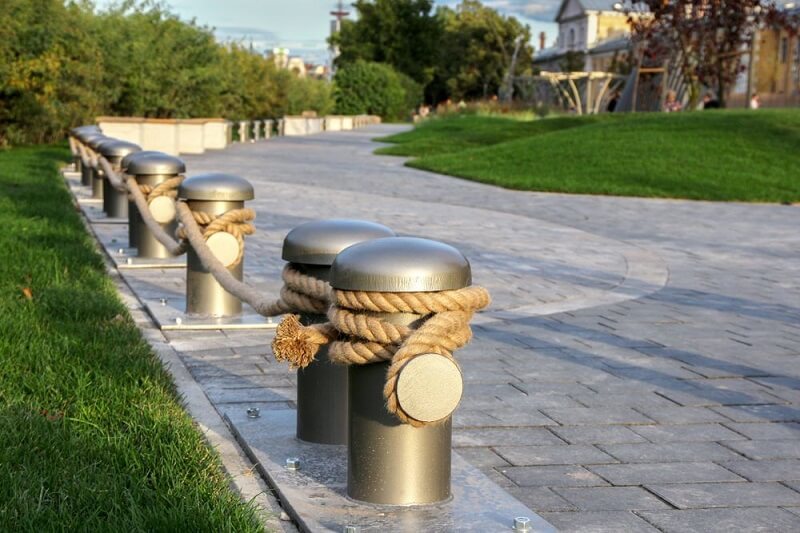Have you ever noticed those sturdy posts in car parks or along footpaths and wondered why they’re there? Maybe you’ve seen bright yellow metal bollards guarding a shopfront or protecting a pedestrian zone. In many places, hard-wearing posts like these—called safety bollards—play a crucial role in keeping people and property safe from collisions. They might look simple, but there’s far more to a proper bollard installation than just digging a hole and pouring concrete.
In this blog post, we’re going to explore everything you need to know about installing safety bollards—especially if you want to comply with Australian standards for bollards and achieve the best possible outcome. We’ll chat about why bollards matter, how to choose the right size and type, and the key steps needed to position them correctly. Plus, we’ll dive into practical tips on tools, materials, and post-installation checks.
Understanding Bollard Requirements

Before you lift a shovel or buy new bollards, it’s critical to know exactly what they are and how they work. In Australia, many local councils and government agencies have guidelines that detail when and how bollards must be installed. These specifications help prevent accidents, minimise damage, and maintain a safe environment for both vehicles and pedestrians. When you’re aware of these bollard requirements, you’ll be much better positioned to meet safety standards and avoid potential fines.
What Are Bollards?
Bollards are short, sturdy posts designed to block or restrict vehicle access in specific zones. They can be made from metal, concrete, or even plastic coatings for better visibility. You’ll find them in various settings—car parks, footpaths, dedicated loading zones, or even in front of high-traffic retail premises. They serve as protective barriers to safeguard infrastructure, pedestrians, and parked cars from impact. More than just traffic stoppers, bollards also help with directing traffic flows and preventing unauthorised entries.
Bollard Terminology: Height, Diameter & Footing
When you read through bollard construction detail guides, you may come across terms like “standard bollard height,” “standard bollard diameter,” and “bollard footing.” These are essential specifications. The typical bollard height can vary, but many Australian standards for bollards suggest around 900 mm to 1,200 mm above ground level. The standard bollard diameter often lands somewhere between 100 mm and 165 mm, depending on the level of impact protection needed. Meanwhile, the footing refers to the portion of the bollard that’s embedded below ground. Proper footing depth depends on factors like soil type, local regulations, and the type of bollard. Ignoring the correct diameter or the recommended footing depth can compromise overall stability, making it vital to confirm the correct measurements before you start digging.
Choosing The Right Bollard
Not all bollards are created equal. Selecting the right type, material, and installation method is just as important as getting the measurements right. Different environments call for different solutions: a residential bollard installation in a leafy suburban street won’t involve the same heavy-duty bollards seen in a commercial loading bay. Taking time to research the available options allows you to find the perfect balance of functionality, compliance, and cost-effectiveness.
Residential Bollard Installation vs. Commercial Applications
In residential settings, bollards often protect driveways, gardens, or pathways. They might be smaller in diameter or made from less-heavy materials, but they still need to meet bollard spacing Australian standard guidelines if they’re installed near sidewalks or shared access roads. Residential bollards are usually less obtrusive and can be designed to blend in with the property’s aesthetic. You may even see decorative concrete bollards installation near garden beds or entrance gates.
In contrast, commercial bollards frequently provide robust protection in public places or high-traffic areas. These bollards often have thicker diameters, reinforced steel cores, or added reflective surfaces. Car park bollards regulations might specify heightened visibility requirements, which can be accomplished by painting bollards in bright colours or adding reflective strips. Whether placed outside a supermarket loading dock or used to block vehicle access at a public building, commercial bollards must align with bollard installation specifications that focus on safety and high-impact resistance.
Planning Your Bollard Installation
A clear, well-structured plan sets the foundation for a smooth installation process. Before you start any physical work, it’s vital to carry out a site assessment and confirm the bollard installation specifications you’ll need to follow. Proper planning helps avert last-minute issues like misalignment, insufficient spacing, or overlooked underground utilities.
Bollard Installation Specifications & Requirements
Once you have the site layout, you can review the relevant regulations for your area. Australian standards for bollards can differ slightly depending on your state or council. Nonetheless, a few key rules often apply across the board. For instance, the standard bollard diameter and height guidelines ensure uniformity, while spacing limits keep pedestrians safe and stop cars from sneaking through. By meeting these bollard requirements, you’re more likely to stay on the right side of the law and maintain a secure environment. Also, remember that commercial premises may face stricter guidelines around load-bearing and impact resistance than residential ones. Always verify with local authorities to be certain you’re ticking all the right boxes.
Post-Installation Checks & Maintenance

Once the bollards are firmly in place, most people think the job is done. However, a little maintenance work keeps them in top form and prolongs their lifespan. A few simple checks, performed regularly, will help you identify potential problems early and allow quick fixes before they develop into bigger issues.
Visual Inspections & Quality Assurance
Start with a routine visual inspection. This usually involves walking past each bollard and confirming that they remain upright, undamaged, and free from corrosion or cracks. Pay special attention to the base area where water can pool or ice can form, depending on local conditions. If you spot any wobbly bollards, check whether the concrete base is damaged or if the bollard footing has loosened. For commercial sites, such inspections can become part of a regular maintenance schedule to meet workplace health and safety obligations.
In addition, keep an eye on paint quality or the condition of reflective tapes. Especially in places with heavy traffic, exterior paint may chip away over time, reducing the bollard’s visibility. Repainting or reapplying reflective strips is a quick job that makes a big difference. If your bollards are removable or collapsible (more common in certain commercial applications), make sure all moving parts function smoothly and are free from rust or debris. Regular lubrication might be necessary to keep mechanisms working well. By dedicating a bit of time to these checks, your bollard installation will serve its purpose without fail.
Conclusion
Summing up what we’ve covered, installing safety bollards isn’t just about putting a post in a hole and hoping for the best. It involves choosing the right type of bollard based on your site’s unique requirements, following car park bollards regulations, and meeting standard bollard diameter guidelines. On top of that, you’ve got to plan carefully, gather the necessary tools, and follow a proven step-by-step method to secure your bollards in place.







